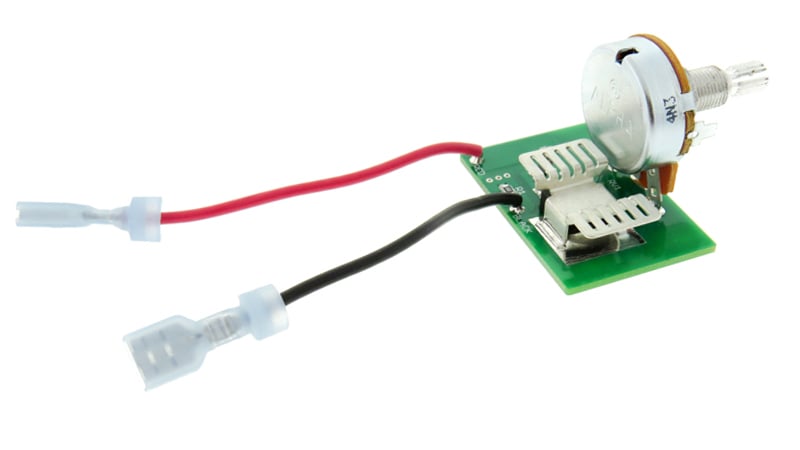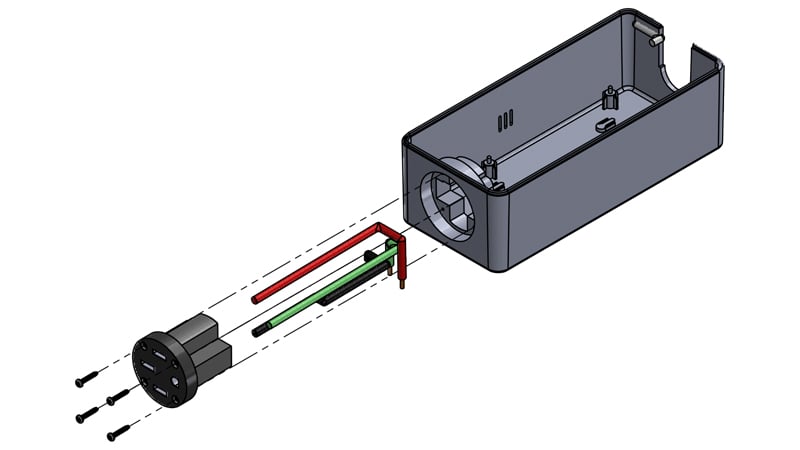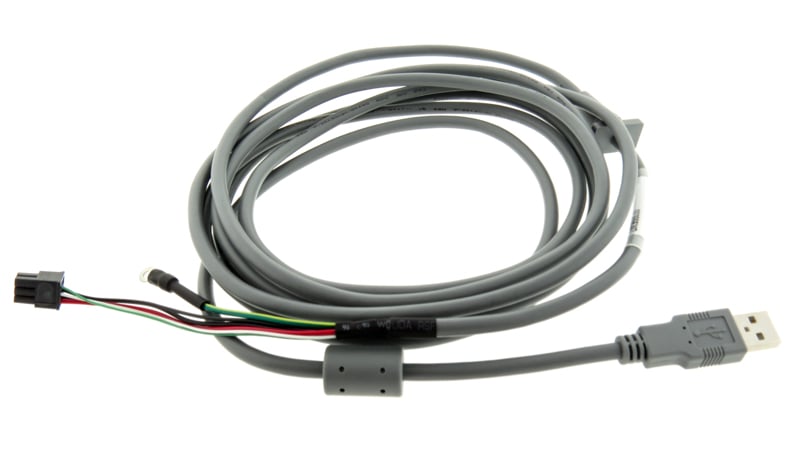In terms of electronics, everyone agrees that having to deal with component obsolescence is taxing on resources and costs companies’ enormous amounts of time and money. The task of finding replacement options for an obsolete component is not an easy one and is usually spearheaded by engineering and purchasing departments.
But it’s not just one company’s engineering and purchasing departments that are typically involved; it’s the resources of several organizations all working together to solve one material shortage. Let’s take a look at what this means in terms of cable assemblies and connectors.

Insulated spade terminals are inexpensive and immune to obsolescence.
Finding a Replacement
If a replacement has been identified that relieves the material shortage, this best-case scenario occurs when the alternate component works seamlessly with no design changes to the rest of the system. This would be considered a drop-in replacement, meaning that there is zero impact on other system elements.
Some examples of this situation are when PCB surface-mounted discrete components like capacitors and resistors go end-of-life. Thankfully, through the many online electronics distribution channels, common components are readily available and in stock. If the alternate components’ performance is the same, and whoever retains design authority approves the change, bill of materials (BOM) updates can be implemented with minimal disruptions to the schedule and program budget allowing the project to move forward.
Unfortunately, all too often the component that has gone obsolete is critical to the operation of the system. Or worse yet, the problem-child component has no drop-in replacement available and now the system’s firmware is impacted. This impact has now spiraled into a major system redesign project that may cost tens or hundreds of thousands of dollars.
Depending on the age of the design, older projects, sometimes referred to as legacy designs, have limited or inconsistent documentation compounding the problem. How do you evaluate an alternate component if you do not have a complete BOM to study?
The projects that seem to bog down most often are the ones where documentation is scarce. There are many reasons why documentation can be lost or compromised over the years. The most common reason is the fact that when intellectual property has changed hands through acquisition, many times the link to original data sets is broken. Another reason is simply the age of the data; old mylar drawings from the 1970s and 1980s need to be digitized or risk fading and degrading over time. Something as trivial as scanning data at too low of a DPI resolution can make the small font on an assembly drawing illegible.
How is the Shortage Discovered?
What is most troubling about component obsolescence is the fact that many times this material shortage is not identified until it’s late in the process. Your project may already be funded, with design approvals already in motion with complete mechanical drawings and schematics. The BOM is probably finalized, and component sourcing has already begun. It’s also likely that any custom plastic parts have already been launched with POs worth tens of thousands of dollars committed to hard-tooling vendors. Changes this late in the game that impacts PCBAs, or hard tooling can be wildly expensive.

Changing the panel mounted receptacles will impact tooling for all plastic members.
Most electronics manufacturers will work to obtain firm pricing and current lead times before finalizing any quotation. As a part of this process, manufacturers will request pricing and lead-time information from all suppliers that are related to the build. During this step, corners can be cut to accelerate the quote response. While incorrectly estimating the price can cause profitability concerns, some companies may intentionally submit pricing without all the necessary information to save time on quote response. What if the quote submission failed to identify a long lead-time item or obsolete component? Manufacturers must do their due diligence and notify potential customers of the associated sourcing risks, otherwise, significant issues can arise when it’s time to build.
A common situation that project managers will plan for is when a specialty connector is available in stock one day and then is gone the next. If a new project requires 100 specialty circular connectors to complete a build, and the day the quote is submitted the various online electronics distributors show a total of 250 connectors in stock, all seems well. But if another company buys the available stock before the project is launched, you may be stuck waiting for a full lead time of 26 weeks for new connectors to be built from scratch. Buying a few dozen connectors at risk early in the project can save a lot of headaches in the long run.
Finding a Replacement Connector
Is there an alternative available? What may be new and specific to you may be wildly common in another industry. Spend time and research the connector before making quick decisions about retooling or amending qualification reports. Changing vendors or BOMs may require additional testing and qualification activities costing more time and money.

Cable assembly with USB connector.
Using common interconnect types whenever possible can help improve the recovery plan if something goes obsolete. Simple interfaces like USB, RJ45, and M8/M12 can be easily swapped and are virtually immune to obsolescence. If you are using single or dual-row wire-to-board connectors, use a common pin size and standard pitch to reduce complications later in life.
Finding a replacement can take weeks of effort with varying amounts of success. Some surface-mounted components like resistors, capacitors, and even some LEDs can be swapped with no impact on the circuit. Many of these come in all component and package sizes.
Going Forward
Ultimately, being proactive is the best way to manage obsolete connectors and component risk. Understanding what types of products are at risk, and developing an actionable plan are steps that can be taken to lessen the impact when a critical part goes end-of-life.
Periodically reviewing BOMs for high-risk components can be a quick check done quarterly. With a few simple internet searches at trusted websites, stock can be verified. Invest in risk-reduction material by buying components that are critical to the system and cannot be easily replaced.
Summary
Products will continue to go end of life, forcing engineers to continually revise BOMs and drawings. Connector obsolescence is even more frustrating because there is always the other side of the connector to worry about.
Most connectors that are at risk of going obsolete may have a unique plug and receptacle design, further complicating the ability to find an alternate. Obsolescence means new suppliers, new supply chains, and new vendor-customer relationships, and with this comes new and sometimes steep learning curves. All of this means obsolescence costs companies time and money. With a few timely-made decisions early in the process, connector obsolescence can actually be managed.
Key Takeaways
- Drop-in replacements are rare but ideal: The best-case scenario is when an alternate connector can be swapped in with no design or firmware changes, but often critical components lack such direct substitutes.
- Incomplete or outdated documentation increases risk: Legacy designs, lost data, or old drawings complicate replacement evaluation, especially when BOMs are missing or inaccurate.
- Late discovery is costly: Obsolescence issues often arise after funding, BOM approval, and tooling commitments, making redesigns and delays extremely expensive.
- Connector availability can change overnight: Specialty connectors may appear in stock but disappear quickly; securing critical parts early can prevent 26-week delays and production setbacks.
- Proactive risk management is essential: Regularly review BOMs, use common connector types (USB, RJ45, M8/M12) where possible, and consider stocking at-risk parts in advance to reduce disruptions.
















